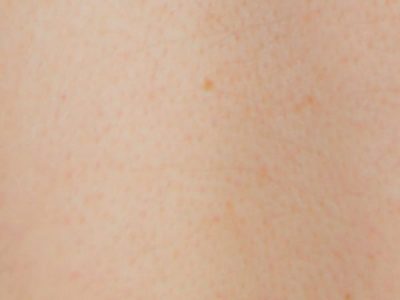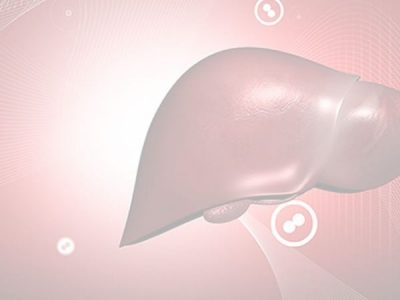Welcome to the stability of drugs in compliance aids section for pharmacists. This section includes links to drug information resources on light sensitive drugs and what medicines can be repackaged in compliance aids / dose administration aids (DAA) / monitored dosage systems (MDS).
KEY POINTS
General exclusion list for medicines not suitable for repackaging in a DAA/MDS:
- Hygroscopic or moisture sensitive medicines, dispersible tablets, effervescent tablets, soluble tablets, buccal tablets, sublingual tablets, orodispersible tablets
- Medicines requiring refrigeration
- Light sensitive medicines, unless the DAA/MDS offers protection from light
- Medicines prescribed as p.r.n (when required)
- Patient’s medicine dose may change depending on test results e.g. warfarin
- Medicines requiring safe handling e.g. cytotoxic medicines
The tabulated guide is self-explanatory. It is an alphabetical list of drugs sorted by generic name. Defined against each drug name are the Trade Name, Source of information (usually the manufacturer) and the Date on which the information was last reviewed.
Under the heading “Stability”, information has been tabulated in two columns. The first column refers to information received from the manufacturer and the second column refers to local practice at Pinderfields General Hospital.
- Source: nationalarchives.gov.uk/webarchive/
- Clinical Resource: Guide
- Register to Access Content: No
SPS (Specialist Pharmacy Service) Medicines in Compliance Aids Stability
What the SPS MCA stability information does – it makes recommendations on the suitability of solid dose forms for transfer from the manufacturers’ original packaging to multi-compartment compliance aids (MCAs). These recommendations are based on
- physico-chemical stability and characteristics of the medicine and its formulation(s).
- advice, where available, from manufacturers
- data, where available, on storage in MCAs
- Source: sps.nhs.uk
- Clinical Resource: Database
- Register to Access Content: No
Medicine Storage – An Uncontained Issue?
In general, the original container protects the medicine from heat, air, light and/or moisture. Exposure to these elements may affect the stability of the formulation and/or the active ingredient, which can alter the effectiveness and safety of the medicine.
- Source: medsafe.govt.nz
- Clinical Resource: Publication
- Register to Access Content: No
Appendix 5 Risk assessment for packing medicines a DAA 22
Appendix 6 Suitability of medicines for packing in a DAA
- Source: psa.org.au
- Clinical Resource: Guideline
- Register to Access Content: No
Medicine stability in multi-compartment compliance aids
More information concerning medicine stability when repackaged into MCAs is needed to support pharmacists as they prepare MCAs. Pharmaceutical manufacturers can be encouraged to undertake medicine stability testing in MCAs.
- Source: gerpac.eu
- Clinical Resource: Presentation
- Register to Access Content: No
Studies showed that some medicines can be repackaged only if consecutive storage occurs under special conditions, such as exclusion of light. The storage outside the original packaging may lead to product deterioration and degradation of the active ingredient, resulting in a lack of efficacy and probably a lack of safety of the product. Furthermore, the change of appearance can lead a patient to refuse to take the medication, which in turn may have a negative influence on the therapy, even though the chemical and physical stability may be unaffected.
- Source: springer.com
- Clinical Resource: Journal Article
- Register to Access Content: No
Dose administration aids: Pharmacists’ role in improving patient care
Drug manufacturers, on the whole, tend to discourage repackaging of medications and there is little quality data available to support this process. Indeed, only a small number of medications have been investigated for their stability following repackaging into DAAs, namely atenolol, paracetamol, frusemide, prochlorperazine, sodium valproate, aspirin (dosette boxes) and clozapine. This paper will review the repackaging of medications into DAAs and the role that the pharmacist plays in this process to improve patient care, in addition to presenting the Australian research that has contributed substantially to the body of information available internationally on the quality implications, relating to the stability of medicines repackaged into DAAs.
- Source: amj.net.au
- Clinical Resource: Journal Article
- Register to Access Content: No
Appropriate use of dose administration aids
Despite the widespread use of dosing devices, there are few data regarding the stability (and therefore efficacy and safety) of medicines during packing and storage. Some medicines may not be suitable for use in a dosing aid or may have reduced shelf-life when re-packed (for example thyroxine is only stable for 14 days in a sealed, light protected dosing aid stored below 25o C). In warm and humid climates, stability of medicines in dosing aids may be further reduced.
- Source: australianprescriber.tg.org.au
- Clinical Resource: Journal Article
- Register to Access Content: No
The role of dose administration aids in medication management for older people
Evidence suggests dose administration aids can improve medicine adherence but the size of this benefit is unclear and there is little evidence from controlled trials in older people or people taking multiple medicines. There is no conclusive evidence that they improve health outcomes. Use of an aid is limited to medicines suitable and stable for repackaging.
- Source: onlinelibrary.wiley.com
- Clinical Resource: Journal Article
- Register to Access Content: No
Many Common Drugs in Dermatology are Light, Temperature, or Moisture-Sensitive
Photosensitivity is defined as responsiveness to light exposure. For many common dermatologic drugs, proper storage conditions are essential for maintaining drug activity. Degradation and loss of activity can occur with exposure to light, temperature, and/ or moisture. For example, ketoconazole degrades after 24 hours of light exposure. In this article storage guidelines for common dermatology drugs are provided. We suspect that drug degradation is common due to improper storage and that improved patient instruction regarding storage will reduce degradation and alleviate some of the danger associated with improper storage and usage patterns.
- Source: skintherapyletter.com
- Clinical Resource: Article
- Register to Access Content: No
Light-Sensitive Oral Prescription Drugs
After receiving such a question in our Drug Information Center, it became apparent that there was a lack of resources available for an overall list and, after exploring several outlets(PubMed, Facts & Comparisons 4.0, and several listserves), we were able to locate 1 list published in 2008. It seems as if the authors of this list experienced the same conundrum as us. Thus, we expanded and updated the list to provide the following compilation of light-sensitive medications.
- Source: thomasland.com
- Clinical Resource: Journal Article
- Register to Access Content: Yes
Stability Implications of Repackaging Paracetamol Tablets into Dose Administration Aids
Despite the widespread use of dose administration aids (DAAs) there is little available data on the stability of drugs during repackaging or storage in these devices.
- Source: griffith.edu.au
- Clinical Resource: Journal Article
- Register to Access Content: No
Very little is known about the stability of solid-dose medicines taken out of their sealed, manufacturers’ packs and placed together, or even singly, within MCCAs, because manufacturers usually test the stability of their products in the final packaging.
- Source: eahp.edu
- Clinical Resource: Journal Article
- Register to Access Content: No
Stability of Frusemide Tablets Repackaged in Dose Administration Aid
Repackaging tablets into a dose administration aid (DAA) requires that the pharmacist consider the stability of the active pharmaceutical ingredient and the excipients of the drug product. Frusemide is susceptible to photodegradation and is commonly repackaged into DAAs.
- Source: griffith.edu.au
- Clinical Resource: Journal Article
- Register to Access Content: No
Resources last checked: 01/03/2024



